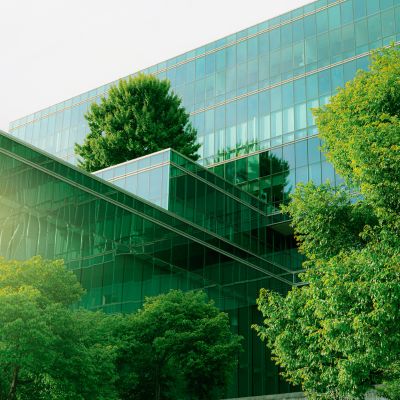Guest Acquisition Cost (GAC) is a necessary metric for any hotel aiming to effectively adjust its marketing and sales strategies. Imagine GAC as a tool that helps hotels determine how much they spend to attract each new guest.
This includes expenses like advertising on TV or online, discounts offered, and fees paid to booking sites. By tracking these costs, hotels can see which marketing efforts are working best and which are too expensive.
Understanding GAC is not just about cutting costs—it’s about intelligent spending. It helps hotels allocate their budgets most effectively, ensuring that each dollar spent attracts guests without wasting resources.
For hotel owners and managers, understanding GAC can boost their hotel’s revenue and profitability, making their business stronger and more competitive in the busy hospitality market.
This insight allows them to adjust strategies swiftly, stay ahead of the competition, and ultimately drive more bookings while maintaining healthy profit margins.
What is Guest Acquisition Cost (GAC)?
In the hospitality industry, Guest Acquisition Cost (GAC) refers to the total expense incurred by a hotel to secure a new guest. The guest acquisition cost (GAC) measure is a comprehensive accumulation of all the financial efforts a hotel invests to attract guests, from the initial contact until they make a booking.
GAC includes a variety of expenditures, such as the cost of running advertisements on different media, the fees paid to online travel agencies (OTAs) for bookings, promotional offers, and even the cost of maintaining a sales team.
For hoteliers, GAC is an essential metric as it directly impacts their property’s profitability. By understanding GAC, hotels can evaluate the effectiveness of their marketing and sales strategies.
If the cost to acquire each guest is too high, the hotel’s marketing efforts are not as efficient as they could be.
Conversely, a lower GAC suggests a more cost-effective approach, allowing the hotel to reallocate funds, perhaps to improve guest experiences or expand marketing reach.
GAC helps hotels balance spending money to attract guests and the revenue each guest brings. Understanding, managing, and calculating the guest acquisition cost (GAC) is critical to maintaining a profitable and sustainable business.
Types of Guest Acquisition Costs

Guest Acquisition Cost (GAC) encompasses a variety of expenses that hotels incur to attract and secure new guest bookings.
These costs are typically categorized into several key areas, each playing a critical role in a hotel’s overall marketing and operational strategies. Understanding these can help hoteliers optimize their spending and augment profitability.
1. Marketing Expenses
Marketing expenses, including costs related to advertising, promotions, and digital marketing campaigns, are a significant component of GAC.
These can range from traditional advertising like TV and print ads to digital marketing efforts such as pay-per-click (PPC) campaigns, social media ads, and email marketing.
For example, a hotel might spend money on Google Ads to appear at the top of search results when potential guests search for “hotels in [city].”
Additionally, engaging content on platforms like Instagram or Facebook can persuade prospective guests, which also incurs costs for content creation and possibly paid promotion.
Effective marketing raises awareness and can directly lead to bookings, making it a vital part of GAC.
2. Sales Commissions
Sales commissions are fees that hotels pay to travel agents, online travel agencies (OTAs), and other sales channels that facilitate guest bookings. For example, when a hotel receives a booking through a platform like Booking.com or Expedia, a portion of the revenue from that booking is paid as a commission to the OTA.
This fee varies but can be substantial, depending on the terms agreed upon by the hotel and the distribution service.
This cost is a significant part of GAC as it directly relates to acquiring guests through third-party facilitators.
3. Distribution Costs
Distribution costs include managing and maintaining listings across various distribution channels in a hotel.
This includes the commissions mentioned above and fees related to channel management tools that help synchronize availability and rates across multiple platforms. Distribution costs form a critical part of calculating guest acquisition cost (GAC).
Efficient channel management ensures that a hotel maximizes its visibility and booking potential across all possible platforms, which is essential for competitive positioning in the market.
Strategies to optimize these expenses are discussed in the hotel marketing plan.
4. Technology Investments
In today’s digital age, investing in technology is fundamental for efficient guest acquisition.
This category includes costs for implementing and maintaining systems like booking engines and customer relationship management (CRM) systems, which help streamline the booking process and enhance guest management.
For instance, a robust booking engine integrated into a hotel’s website allows guests to make direct bookings, reducing the dependency on OTAs and lowering GAC. This is important when it comes to knowing about GAC.
Additionally, CRM systems help hotels maintain detailed profiles of their guests, enabling personalized marketing and improving guest retention.
Calculating Hotel GAC
Calculating guest acquisition cost (GAC) is essential for hotels to understand how much they are spending to attract each guest and evaluate their marketing strategies’ effectiveness. Here’s a step-by-step guide on how to calculate GAC using straightforward formulas and methodologies:
Step 1: Gather Data
Collect all relevant financial data related to guest acquisition. This includes marketing expenses, sales commissions, distribution costs, and technology investments. Ensure that all costs are captured over a specific period, such as a month or a year.
Step 2: Calculate Total Acquisition Costs
Add all the costs gathered in the first step to find the total acquisition costs. This sum represents the total amount spent attracting new guests during the specified period.
Step 3: Determine the Number of Acquired Guests
Count the total number of new guests acquired in the same period. This count should only include guests who have made a booking and stayed at the hotel.
Step 4: Apply the GAC Formula
Use the formula: GAC = Total Acquisition Costs / Total Number of Acquired Guests.
This calculation will give you the average cost incurred to acquire each guest.
Alternative Methodology:
Using Room Nights
Another way to measure GAC is to consider the number of room nights booked by new guests rather than just the number of guests. This method provides a more detailed view, which is especially useful for understanding the cost relative to the actual hotel usage.
Formula: GAC = Total Acquisition Costs / Total Number of Room Nights Booked
These formulas help hotels track how much they spend to bring in guests and which channels are most cost-effective.
Factors Influencing Hotel GAC

Several factors can influence guest acquisition costs (GAC) in the hospitality industry. Understanding these can help hotels adjust their strategies to augment costs and improve profitability. Here are some of the critical elements that can impact GAC:
1. Seasonality
The time of year significantly affects GAC due to fluctuating demand. During peak seasons, when demand is high, hotels may spend less on marketing per guest due to increased natural traffic and bookings.
Conversely, in off-peak times, more promotion spending may be necessary to attract guests, which can increase GAC.
2. Market Demand
General market conditions and economic factors also play a critical role. In a booming economy, people travel more, potentially lowering the GAC as more guests seek accommodations.
However, during economic downturns, travel decreases, and hotels might need to invest more in marketing efforts to attract fewer travelers, thereby increasing the GAC.
3. Competition
The competition level in the hotel’s area can influence GAC. If many hotels compete for the same clientele, you might have to spend more on marketing to stand out, increasing the GAC.
Innovative marketing strategies and unique selling propositions are essential in competitive markets to attract guests without excessively raising costs.
4. Distribution Channel Mix
The choice of distribution channels also affects GAC. Direct bookings generally cost less in terms of acquisition costs compared to bookings made through online travel agencies (OTAs), which involve commissions.
Balancing the distribution channel mix and optimizing each channel’s effectiveness can significantly impact the overall GAC.
Importance of Monitoring GAC Trends
Regularly monitoring guest acquisition cost (GAC) trends is vital for hotels aiming to maximize their profitability and operational efficiency.
Keeping a close eye on GAC and related performance indicators allows hotel managers to make informed decisions, identify cost-saving opportunities, and refine marketing strategies. Here’s why it’s so crucial:
1. Identifying Cost-Saving Opportunities
By calculating the guest acquisition cost (GAC) and tracking it over time, hotels can spot trends or sudden changes in the cost of acquiring guests.
This ongoing monitoring helps pinpoint what marketing strategies are working and which are not, allowing for quick adjustments. For instance, if a specific ad campaign shows diminishing returns, it can be revised or halted to avoid wasteful spending.
2. Improving Budget Allocation
Understanding fluctuations in GAC helps with better budget management. Hotels can allocate more funds to successful channels and campaigns, improving overall marketing effectiveness.
This strategic allocation of resources is critical to staying competitive in a dynamic market while knowing about GAC.
3. Enhancing Marketing Strategies
Regularly analyzing guest acquisition cost (GAC) trends provides insights into the efficacy of different marketing channels and campaigns.
This data-driven approach enables hotels to continuously improve their marketing tactics, ensuring they attract guests in the most cost-effective manner possible.
4. Adjusting to Market Changes
Various external factors like economic shifts, technological advancements, and changes in consumer behavior influence the hospitality industry.
Regular monitoring of GAC allows hotels to adapt quickly to these changes, maintaining a competitive edge and optimizing guest acquisition costs effectively.
Strategies for Reducing Hotel GAC

Reducing Guest Acquisition Cost (GAC) is fundamental for hotels looking to maximize their revenue and profitability. By implementing effective strategies to lower these costs, hotels can improve their bottom line while providing excellent service to their guests.
Here are some practical tips and strategies to consider:
1. Improving Direct Bookings
- Optimize Your Website: Ensure your hotel’s website is user-friendly, visually appealing, and optimized for search engines. This will attract more organic traffic and increase the likelihood of direct bookings at your hotel, which are generally cheaper than those obtained through third-party channels.
- Offer Exclusive Deals: Offer special rates or packages exclusively on your official website to encourage direct bookings. This not only reduces GAC but also helps build customer loyalty.
2. Enhancing Guest Loyalty Programs
- Reward Repeat Guests: Develop a loyalty program that offers tangible benefits such as discounts, room upgrades, or free services to repeat guests. This encourages guests to book directly and repeatedly, reducing the need for costly acquisition strategies.
- Personalized Communication: Use customer relationship management (CRM) systems to send personalized messages and offers based on past guest preferences and behavior, enhancing the guest experience and increasing the likelihood of return visits.
For further details on creating effective loyalty programs, see Guest Experience.
3. Optimizing Digital Marketing Campaigns
- Leverage Data Analytics: Utilize analytics to understand which marketing campaigns are performing well and which aren’t. This allows you to allocate your marketing budget more effectively, focusing on high-performing strategies that lower GAC.
- Targeted Advertising: Implement targeted advertising campaigns focusing on specific demographics or markets. This increases ad spend efficiency by reaching those most likely to book a stay at your hotel.
- Social Media Engagement: Increase engagement on platforms like Facebook, Instagram, and Twitter to build direct relationships with potential guests. Effective hotel social media strategies can increase direct bookings at a lower cost.
4. Streamlining Distribution Channels
- Evaluate Channel Performance: Regularly assess the performance of your distribution channels. Reduce reliance on expensive channels and increase investment in those that offer better returns and lower costs.
- Negotiate Better Terms with OTAs: While OTAs play a crucial role in hotel bookings, negotiating better commission rates can significantly reduce GAC. Building a solid negotiation position comes from understanding your contribution to the OTA’s business.
Conclusion
Understanding and effectively managing your Guest Acquisition Cost (GAC) is pivotal for any hotel’s success.
By implementing the strategies discussed, such as improving direct bookings, improving loyalty programs, and optimizing digital marketing efforts, hotels can significantly reduce their GAC. This boosts profitability and strengthens the relationship between hotels and their guests.
It is essential to regularly monitor GAC trends. This allows hoteliers to make informed decisions that align with changing market dynamics and guest preferences.
Ultimately, a well-managed GAC leads to more efficient operations and a better bottom line, ensuring that hotels thrive in a competitive industry.
Utilize these strategies to change how you attract and retain guests, turning cost savings into opportunities for growth and heightened guest experiences.








